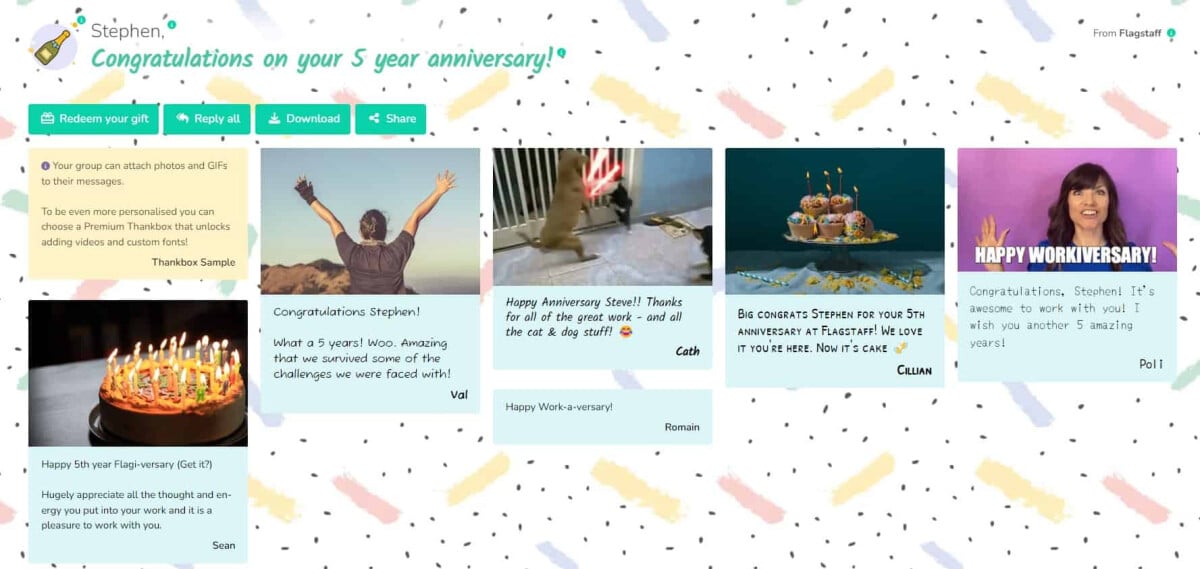10 Strategies We Use to Foster Workplace Transparency


Want to know the secret to boosting employee engagement? Be transparent!
Workplace transparency is more than just setting out clear instructions–it’s open, two-way communication between management and employees. The goal is to be able to express expectations, mistakes, feedback, and setbacks honestly and respectfully.
But how can you cultivate a more transparent workplace?
We’ve got you covered. Join us at Thankbox as we explain the importance of cultivating workplace transparency and share our top 10 suggestions for creating a more trustworthy workplace.
Let’s get started!
Why is workplace transparency important?
Achieving a transparent company culture should be every leader’s top priority.
Here’s why:
Enhances trust and credibility: Transparency in the workplace builds trust between employers and leaders, as well as among team members themselves. When information is openly and respectfully shared, it fosters a sense of credibility and reliability.
Makes it easier to manage expectations: If you withhold too much information, you’re likely to run into misunderstandings and unmet expectations. On the other hand, if you lead with transparency, you can make sure that both employee and employer expectations are set and fulfilled.
Improves teamwork and boosts efficiency: A transparent work environment encourages better teamwork and collaboration. When your employees know what’s happening within the organisation, they can more easily align their efforts towards common goals.
Fosters employee happiness and engagement: Trust and transparency in the workplace do wonders for boosting job satisfaction and making employees feel empowered. By supporting and showing your employees how much you value their contributions, it nurtures greater employee advocacy.
BUSINESS_CTA
Promotes diversity and inclusion: Open communication about company policies, practices, and goals ensures that all employees, regardless of their background, feel included and valued.
Attracts and retains talent: In today’s dynamic job market, transparency can be a key differentiator for attracting and retaining top talent. Prospective and current employees alike place a high value on transparency in a company’s culture because it suggests a healthy work environment.

10 ways to enhance your workplace transparency
1. Make your expectations clear
Every employee needs to understand two things very clearly:
Their role within your organisation.
Your expectations in terms of performance—bonus points if they understand how their work contributes to overarching company goals.
By providing them with clear expectations, your employees will know what they need to do to succeed. Of course, your expectations will change but don’t forget to always communicate those changes with your team.
You should also establish transparency as part of your company policy. This holds both management and employees accountable for building a more open workplace, as well as shows your commitment to ensuring it happens.
2. Show open recognition and appreciation
Part of staying transparent is openly giving credit where it’s due. Showing employee recognition doesn’t have to stop at words of congratulations, there are innovative ways available to make recognition even more memorable.
This is where Thankbox steps in to save the day. Our personalised group e-card experience, allows your whole team to get involved and say “Thank you!”. Everyone can join in and fill the Thankbox with sentimental messages, entertaining GIFs, and even memorable photos and videos.

And for when you want to celebrate milestone moments like work anniversaries? You can make the Thankbox even more special with a digital gift card, adding a tangible touch to your employee appreciation.
It’s the perfect way to boost collaboration and foster trust in your workplace.
3. Admit to mistakes
We’re all human, so no matter our position, mistakes are going to happen. When they do, don’t hesitate to inform your team—vulnerability builds trust and encourages your team to overcome the fear of failure.
Also, employees who trust you are more likely to come forward as soon as issues arise with their work. This saves you a lot of time and resources in fire-fighting avoidable disturbances.

4. Share company setbacks
Being open about challenges and setbacks the company faces not only keeps employees informed, but also fosters a collective sense of responsibility and problem-solving.
It also shows your employees that you trust them enough to contribute solutions that are beneficial for the whole team.
5. Provide consistent feedback
When you provide consistent and constructive feedback, it promotes a culture of growth instead of criticism. But of course, feedback should go both ways, and you need to create an open environment to receive feedback from your employees too.
Always give your team the space to voice their ideas and ask questions. It’s the perfect chance to practise active listening.
6. Include your employees in decision-making
Inviting employees to contribute their ideas and opinions in some decision-making processes empowers them and reinforces the value of their input. It’s great for promoting a collaborative working environment.
And the benefits of this don’t end there. Fresh perspectives are amazing for adding innovation and improving efficiency in the workplace.

7. Promote access to information
It’s imperative that your employees have easy access to the information they need at work. You’ll be effectively removing unnecessary barriers to communication and efficiency, helping you foster a more open and productive workplace.
8. Establish an open-door policy
An open-door policy symbolises accessibility and transparency. Your employees should feel comfortable coming to you to express any challenges or concerns they’re facing without fear of backlash or judgement.
Also, focus on building open rapport with your team members so that you can remove the toxicity of rigid hierarchies.
9. Encourage honest conversations
While it’s not wise to encourage everyone to express every single opinion they may have, there’s power in honesty. It could come in the form of constructive feedback, brainstorming ideas or admitting mistakes.
Taking an honest, but respectful, approach to communication builds trust with your employees and enriches your own personal credibility.
BUSINESS_CTA
10. Lead by example
No matter what leadership styles you’ve adopted in your workplace, leaders should constantly embody the principle of transparency in their actions and communication. It creates a safe and healthy work environment and sets a positive example for the rest of the organisation to follow.
Wrapping up
Transparency isn’t built in a day. You have to consistently ingrain trust into your company culture day by day. From recognising each other’s efforts to establishing an open-door policy, each of our 10 methods offers a unique and effective way to boost workplace transparency.
Ready to build strong professional bonds in your workplace?
Create a Thankbox today and see first-hand how genuine gestures of appreciation can make a huge difference in promoting trust and transparency.
Images: Cover | Multiethnic businesswomen walking in a contemporary office | Cheerful friends with thumbs up | Happy colleagues looking at sticky notes





